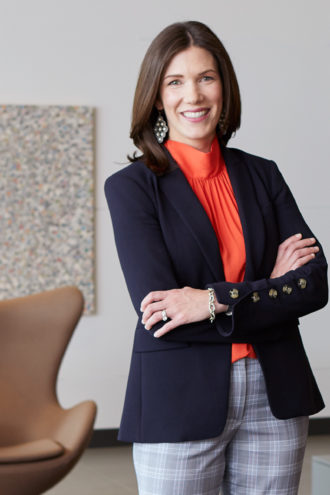I was recently asked for my thoughts on an article published last year in the Harvard Business Review on the unintended effects of open office space. Citing research conducted by Ethan Bernstein and Stephen Turban, the report has now been sent to me more times than any other in my career.

People have been writing about the pros and cons of open vs. enclosed office space for decades, so what’s the big deal with this one? Well, this was academic research, not anecdotal, published by the oldest scholarly journal in the world, Philosophical Transactions of the Royal Society B. The study included wearable technology to track users. If we believe what this paper tells us about the reduction of collaboration in open offices, we should all shift our thinking about the open workplace as soon as possible.
Not. So. Fast.
This study looked at two companies migrating to open space with little to no boundaries between individual spaces, and subjects wore “badges” that could measure face–to-face interaction. The general findings were that in both companies, face-to-face interaction decreased and virtual interaction (email and instant messages) increased. There is, however, also a lot this study doesn’t tell us. For instance, we don’t know if there were other changes in the business. What was the full spectrum of spaces available to these employees for meeting, collaboration, and social interaction? This idea of choice in the workplace also has research and science behind it.
Among organizations that penned counterpoints to the article, furniture and research juggernaut Steelcase cited its recent global workplace study, which revealed preferences for a variety of spaces. In fact, 87 percent of workers that had an assigned space spent between 2 hours to 4 hours every day working somewhere else. The Steelcase report also noted the desire from workers to have smaller, informal spaces to help build trust.
We all have a finite amount of cognitive resources. Where and when each of us performs different types of tasks has a tremendous impact on those resources and on our ability to perform optimally. How and where we do our best work, is highly personal. Even the time of day that we do our best work is individualized.
At Corgan, we’ve been engaged in a year-long conversation about this issue with The Brain Performance Institute, an offshoot of the University of Texas at Dallas’ Center for Brain Health, focused on unlocking the potential of our brains. The science tells us that most of us need quiet to focus on tasks that require deep thinking. The science also says that 45 minutes is the maximum amount of time our brains can do this type of thinking at its highest level. It also says, we lose focus in meetings after 20 minutes! Tasks that are more rote or require less focus may benefit from being done with more stimulus. Ultimately, our brains need time to recover and reset between bouts of deep thinking—the kind of thinking that leads to innovation and new ideas.
Jennifer Zientz, head of clinical services for the institute explains: “While the science is helping us to understand environmental conditions for optimal performance, the truth is that we are currently working with the brain we’ve built. It may be surprising, but much of the way we function in the modern workplace is toxic to our brain health, and this translates to a cost on our performance.” Having a choice of space dependent on type of task may help to mitigate negative effects.
Think about your typical work day. You have email to answer, a spreadsheet to enter some data into, you grab coffee, work on a complex project, attend a few meetings (longer than 20 minutes, I feel sure), eat some salmon (brain healthy), look at Instagram (admit it), take a quick walk, and finally, more email. Should you do it all in one place, and if you did, would it optimize your performance?
Therein lies the art, science, and magic of a great workplace. We’ve been down the road of universal planning more times that I can count. It doesn’t work. The assertion that anyone could complete a high variety of tasks, many of which require collaboration, in any one space is ill-fated in the modern office. The size, type, and duration of collaborative work varies dramatically.
A software company utilizing an agile programming style requires one type of workplace and an accounting firm quite another. Identifying the needs of the users, the work being done, and the culture of the organization are imperative before prescribing any workplace design solution.
We also need to consistently communicate about the workplace changes. Change management is strategic and consistent communication designed to increase successful adoption of workplace change. There was nothing in the Harvard Business Review research that shared how or if the employees were educated about their new work environment.
Buildings remain the largest custom product in the world and there is a good reason for that. One size, one solution, one study does not fit all. If we keep our focus on the humans and provide variety and the choice spaces and choice,–those spaces can be more than just productive or collaborative, they can enhance our brain performance and lead us to our best ideas.
Lindsay Wilson is president, executive managing principal, interiors market sector leader at Corgan.






